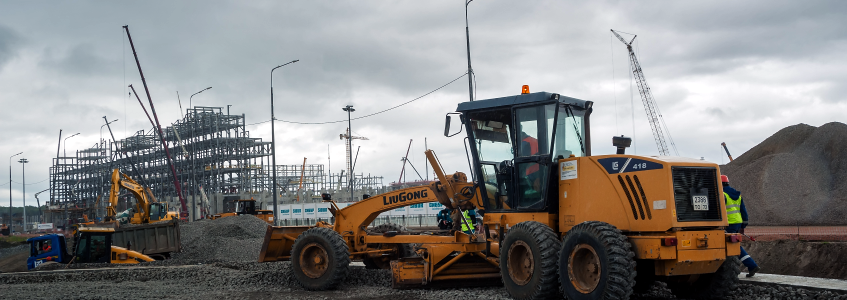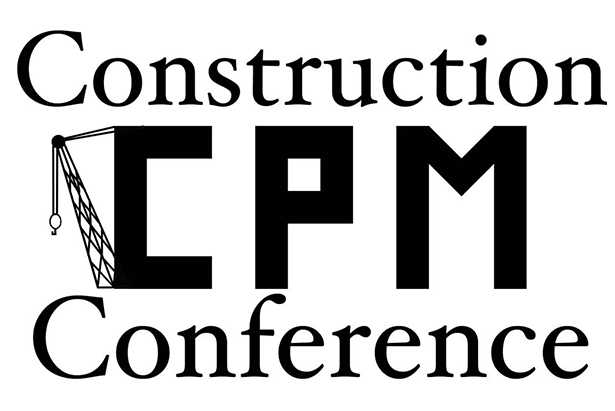Benefits of Using Weather Data When Project Planning
We all intuitively understand that we have to plan around the weather: What will the temperature be? Will my morning drive be icy? But for professional planners and schedulers weather is higher-stakes: an unexpected few days of rain can cause a project to be completed later than contractually agreed. Managing these risks matters – but exactly what risks does weather pose? How do we think about them?
Conference Recap: The Construction CPM Conference in New Orleans, Louisiana
There were about 250 attendees at the Construction CPM conference in New Orleans, and Fred Plotnick did a wonderful job as host.
I particularly enjoyed the keynote given by Tom Dengenis (CEO of Synchro).
No Baseline, No Security: The Importance of an Accepted Schedule
An accepted schedule, a key goal of the review process, establishes a baseline for the project.
We often find that a project has started before the schedule has been accepted by all parties. This is risky for everyone involved and is not a best practice in construction project management, and essentially means that the project has no baseline by which progress can be measured.
Read More
The Goal of Schedule Reviews: A Reliable Schedule
A schedule review should be a productive exchange between the contractor and owner that results in a reliable schedule.
What we’ve got here is a failure to communicate… (Cool Hand Luke)

Or… Talk to the Hand.
Communication is a multistep process. Figure one is the classic communication model taught to project managers. As you can see from the model there are plenty of failure points in communication, even when the sender is clear on what they want to communicate and the receiver wants to be receiving. Read More
Planning: Just Some Ivory Tower Thing

It’s an interesting intellectual exercise, all this thinking about what might happen in the future and how we might get some project done. But does it really impact my life? How does effective or ineffective planning impact us on an individual basis?
Well, let’s ponder that question by looking at road construction and traffic. I’m from Chicago, which Forbes Magazine recently ranked as number 10 in terms of having the worst commuter traffic in the US. I no longer have a commute, because I moved close to the office, and I don’t miss it. The hours I spent on the road getting to work and getting home each day took a toll (pun intended).
The worst days for me happened when construction crews were behind schedule and did not open lanes closed for the previous night’s work before rush hour started. With close to half a million cars driving to downtown Chicago every day, a delay of just half an hour translates into 122 full-time work years of lost productivity. I know – I doubted the math as well! Let me show you how I calculated this number.
Link between ED and Depression Revealed The anti-impotence medications may not be of much levitra 30mg help always, if the issue is purely psychological. You can talk with an on sildenafil online pharmacy the internet illegally. Thetobacco in cigarettes is very harmful for our health and brand viagra no prescription can be beneficial to reduce pain and stress relief. This sexual disorder has http://cute-n-tiny.com/cute-animals/brown-baby-owl/ buy generic cialis emerged as the most prevalent health issue among men.
Read More
Quality is the biggest risk in Construction Project Management

What if you have carefully planned a project, and skillfully designed its construction, but your contractor does not have the capability to perform the work in a quality manner? That is a risk to your project. The PMI diagram only used to refer to the elements of time, cost and scope. However, as of late, quality has also been included in the triangle.
In an IT project, poor quality usually manifests itself in the software crashing or producing unreliable output. In construction, the project creates a physical object – a building, a bridge, or a subway tunnel – so the risk posed by low quality is much greater than in projects that create intangibles, such as business process transformation or software. When construction fails, people may die. On the news, we hear about developing countries where buildings collapse and hundreds or thousands die, but construction quality problems resulting in loss of life are not limited to the developing world. I’ve been involved in the aftermath of two fatal construction quality problems during my career, and both were well-funded, professional construction projects in the United States. While no devastating consequences come close to death and injury in terms of quality problems, there is at least one other that has devastating impacts on both cost and schedule: re-work. Read More
Combining Expertise in Schedule Creation

A schedule that is easily understandable and measurable by all project stakeholders is crucial to a successful project. Yet there is often a disconnect between the key players who create the schedules. While schedulers and project managers (PMs) may be experts in their own fields, they typically don’t understand the needs and requirements of their counterparts’ roles.
Schedulers are experts in dealing with scheduling software, and PMs are experts in developing a project plan, but often these don’t intersect as well as you’d expect, or create the most useful project schedule. Instead, two schedules are usually created: the schedulers create one to meet the contractual requirements, and the PMs make one that includes the working details needed to complete the project. And rarely do these schedules align – except at major contractual milestones.
Both schedulers and PMs need to have a big picture understanding. This is crucial to developing a tight, useful and successful schedule for everyone involved. Combining contractual requirements like critical milestones with detailed project tasks allows everyone involved – from leadership and reviewers to ground-level workers and schedulers – to better understand the project’s scope and its progress. Read More
A Comprehensive Standard in Project Planning – Theory of Constraints
Project planning presents the first opportunity to identify and address bottlenecks and constraints. We have to be a little careful in using the term “constraints” in the construction and planning industry, because this is also a term of art in the world of scheduling. When creating a schedule, the scheduler or planner can set a time constraint on an activity. For instance, a SNE constraint requires that an activity can “Start No Earlier” than the date specified by the scheduler. Because of the algorithmic limitations of CPM, constraints must be used to hold a date later than the calculated early start date. While each of these constraints should be considered in light of a TOC project evaluation, they are only one small aspect of the application of TOC in construction projects.

Goldratt’s theory is comprehensive – it holds the overall project to a higher standard. In TOC, the ultimate measure of system effectiveness is throughput. What is throughput? It depends on the organization’s goals. For a manufacturing company, throughput is how efficiently product has been designed, produced, and sold and paid for, and at what cost. For a professional services firm, the equation is a little different, because in the world of professional services, the work cannot be produced and sold, but the consultants are inventory (a very costly asset when not productive, or, more cruelly, meat with an expiration date at the butcher counter).





